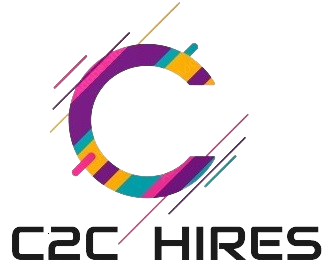
Common Interview Questions for Software Developers
Interviewing for a software development position can be both exciting and challenging. Preparation is key to success, and understanding the types of questions you might encounter can help you feel more confident and perform better.
Here’s a guide to some of the most common software developer interview questions, along with tips on how to answer them effectively.
Technical Questions
1. Explain the difference between object-oriented and functional programming.
- Answer: Object-oriented programming (OOP) is based on the concept of objects, which are instances of classes. It emphasizes encapsulation, inheritance, and polymorphism. Functional programming (FP), on the other hand, focuses on the use of functions and immutable data. FP treats computation as the evaluation of mathematical functions and avoids changing-state and mutable data.
2. What is a RESTful API and how does it work?
- Answer: A RESTful API is an application programming interface that adheres to the principles of Representational State Transfer (REST). It uses HTTP requests to perform CRUD (Create, Read, Update, Delete) operations. RESTful APIs are stateless, meaning each request from the client contains all the information needed for the server to fulfill that request.
3. Describe the process of debugging a program.
- Answer: Debugging involves identifying, analyzing, and removing errors or bugs from a program. The process typically includes:
- Reproducing the issue.
- Isolating the source of the bug by examining the code and using debugging tools.
- Understanding why the bug occurs.
- Implementing a fix.
- Testing the fix to ensure it resolves the issue without introducing new bugs.
4. What is a design pattern? Name a few commonly used ones.
- Answer: A design pattern is a general, reusable solution to a commonly occurring problem within a given context in software design. Some commonly used design patterns include:
- Singleton
- Factory
- Observer
- Strategy
- Decorator
5. Explain the concept of dependency injection.
- Answer: Dependency injection is a design pattern used to implement Inversion of Control (IoC), where the creation and binding of dependent objects are handled by an external component rather than the dependent object itself. It improves code modularity and testing by decoupling the components.
Algorithm and Data Structure Questions
1. How do you find the middle element of a singly linked list in one pass?
- Answer: Use two pointers: a slow pointer and a fast pointer. Start both at the head of the list. Move the slow pointer one step at a time and the fast pointer two steps at a time. When the fast pointer reaches the end of the list, the slow pointer will be at the middle element.
2. Describe how a hash table works.
- Answer: A hash table stores key-value pairs using a hash function to compute an index into an array of buckets or slots, from which the desired value can be found. It allows for fast data retrieval, insertion, and deletion based on the key.
3. What is the difference between a stack and a queue?
- Answer: A stack is a data structure that follows the Last In, First Out (LIFO) principle, where the last element added is the first to be removed. A queue follows the First In, First Out (FIFO) principle, where the first element added is the first to be removed.
4. How do you perform a binary search on a sorted array?
- Answer: Binary search works by repeatedly dividing the search interval in half. Start with the whole array, then:
- Compare the target value to the middle element.
- If the target value equals the middle element, the search is done.
- If the target value is less than the middle element, repeat the search on the left half.
- If the target value is greater, repeat the search on the right half. This continues until the target value is found or the interval is empty.
Behavioral and Situational Questions
1. Describe a challenging project you worked on. How did you overcome the challenges?
- Answer: Provide a specific example, detailing the project’s goals, the obstacles you faced, and the steps you took to address them. Highlight your problem-solving skills, teamwork, and any innovative approaches you employed.
2. How do you stay current with new technologies and programming languages?
- Answer: Mention activities such as attending industry conferences, participating in online courses, reading technical blogs and books, contributing to open-source projects, and being active in developer communities.
3. Describe a situation where you had to work with a difficult team member. How did you handle it?
- Answer: Explain the situation objectively, focusing on your approach to resolving the conflict through communication, collaboration, and finding common ground. Emphasize the outcome and any positive impact on the team dynamics.
4. How do you prioritize tasks when you have multiple deadlines to meet?
- Answer: Discuss your approach to task management, such as using prioritization techniques (e.g., Eisenhower Matrix), setting clear goals, breaking down tasks into manageable chunks, and utilizing tools like project management software to track progress and deadlines.
5. Can you give an example of how you’ve improved an existing system or process?
- Answer: Describe the system or process, identify the issues you observed, and detail the steps you took to enhance it. Highlight the impact of your improvements, such as increased efficiency, reduced costs, or improved user satisfaction.
Conclusion
Preparing for a software developer interview involves a mix of technical knowledge, problem-solving abilities, and interpersonal skills. By understanding the types of questions you might face and preparing thoughtful answers, you can approach your interview with confidence and showcase your qualifications effectively. Remember to tailor your responses to your own experiences and be ready to provide detailed examples to support your answers. Good luck!


